Bird migration is a marvel. Thousands of species regularly undertake cross-continental journeys, navigating via an internal compass that scientists still don’t fully understand.
Sometimes they get blown off course. Or a bird’s navigation system — which scientists think is linked to the Earth’s magnetic field — goes haywire. But it’s not every day that a bird get so lost it ends up on the opposite side of the world.
That’s exactly what has happened to one wayward Steller’s sea eagle. For the last several months, the bird nerd corners of the internet have been abuzz with sightings of this rare Asian species across Canada and New England.
Read on to learn about this bird’s remarkable and unexpected journey, and where it might end up next.
What Exactly is a Steller’s Sea Eagle?
Think of the Steller’s sea eagle as eastern Asia’s equivalent of a bald eagle, but on steroids. This species, Haliaeetus pelagicus, is one of 10 birds in the sea eagle genus, along with our familiar bald eagle.
The first thing you’ll notice about the Steller’s sea eagle — if you’re lucky enough to see one — is its size. This bird is massive. Really, really massive.
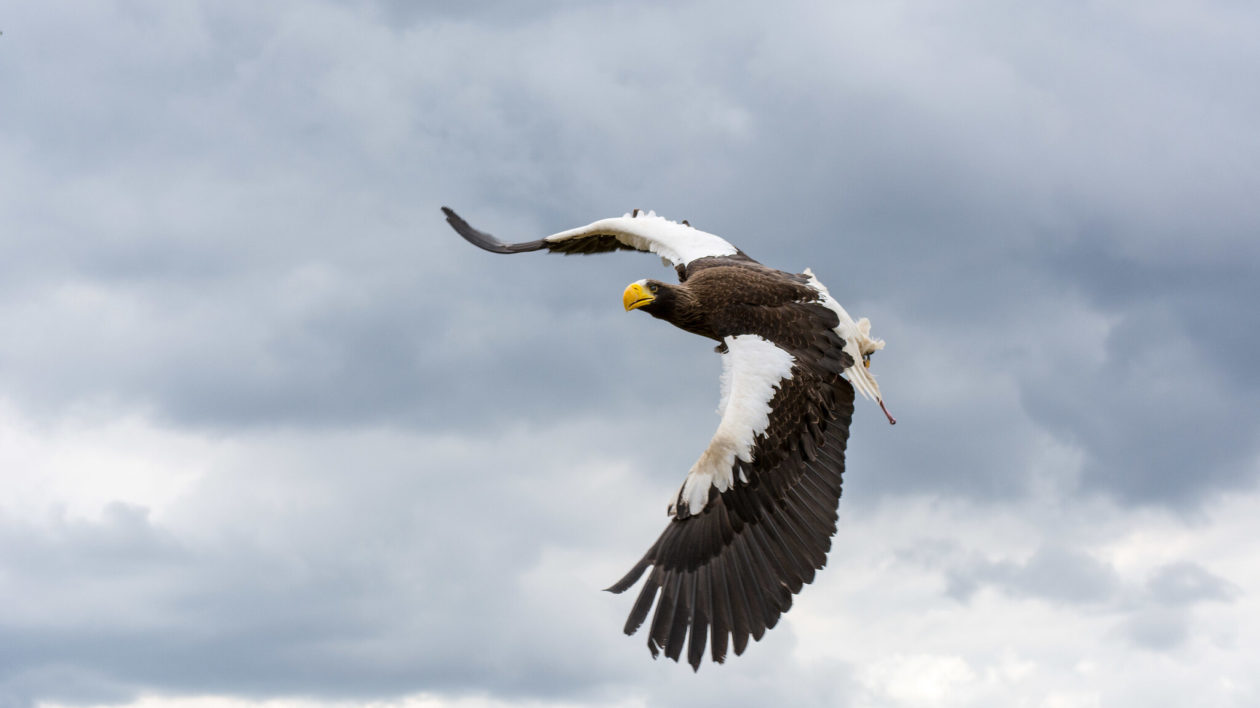
On average, Steller’s sea eagles weigh between 11 and 20 pounds and have a wingspan of 6-to-8 feet. (For comparison, that puts them somewhere between a bald eagle and a California condor.) They’re one of the largest eagles in the world, depending on if you measure by wingspan, weight, or overall mass. The other common contenders for the title are the Philippine eagle and the harpy eagle of South America.
They have a bright orange beak and feet, and rich, dark brown plumage with conspicuous white on the shoulders and tail. As their name suggests, they prey on ocean-dwelling fish and are often noted following fishing boats in search of scraps.
The Steller’s sea eagle is found along Asia’s Pacific coastline, from the Kamchatka Peninsula in Russia, down along the coasts of mainland China, Japan, and the Korean Peninsula. Only 4,000 individuals remain in the wild, and the species is listed as vulnerable by the IUCN.
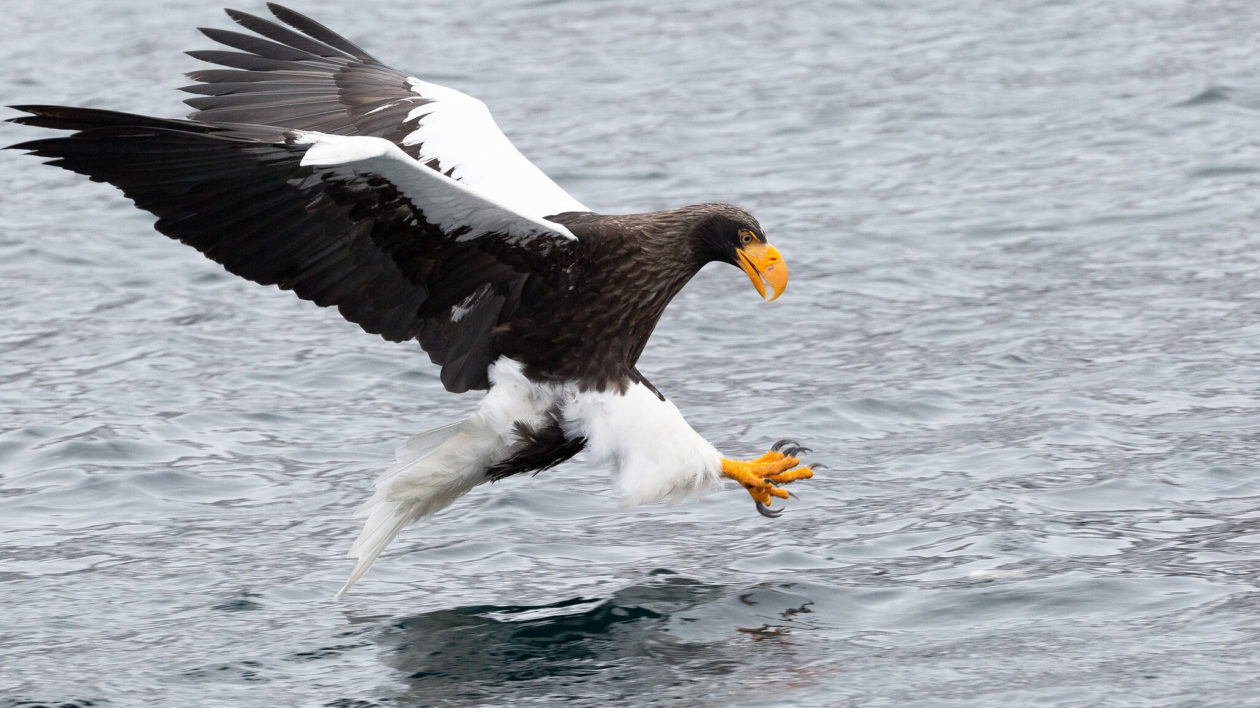
How Did It Get Here, And Where Is It Now?
This particular eagle was first sighted in August 2020 near Denali, Alaska. While that’s still far outside of the bird’s typical range, it’s a somewhat normal vacancy for this species. eBird data shows a handful of Steller’s sea eagle sightings in Alaska and the Aleutian chain, with the birds likely island hopping their way across the Bering Strait.
But this most recent sea eagle took things a bit too far, and kept going across the continent to the eastern seaboard.
The eagle’s exact path from west to east is unknown, except for a perplexing sighting from southern Texas in March 2021. Birders at a nature retreat near Victoria, Texas posted a photo of what was clearly a Steller’s sea eagle, but the image wasn’t detailed enough to confirm whether or not this was the same individual. A large winter storm had recently blown through from the north, so it’s within reason that the bird took an unintended southerly detour.

The trail went dark again for several months, until the bird was spotted in late June 2021 on Canada’s Gaspe Peninsula. It spent the next few months on the coastlines of the Gulf of St Lawrence, with sightings in late July and early August. In early November, the eagle traveled south to Nova Scotia’s Avon River.
The next sighting occurred just before Christmas, on 20 Dec 2021, along the Taunton River east of Providence, Rhode Island. Then at the end of the year the bird turned back north, with sightings from 31 December along Maine’s Sheepscot River.
Since then birders have flocked to the area (pun intended), promoting an amusing note from Maine Audubon for birders to please not inconvenience lobstermen trying to unload their catch on the docks. A few days later, confusion arose on the exact location of the bird when “photos of what appeared to be the eagle were found to actually be a bizarrely eagle-like part of a tree.”
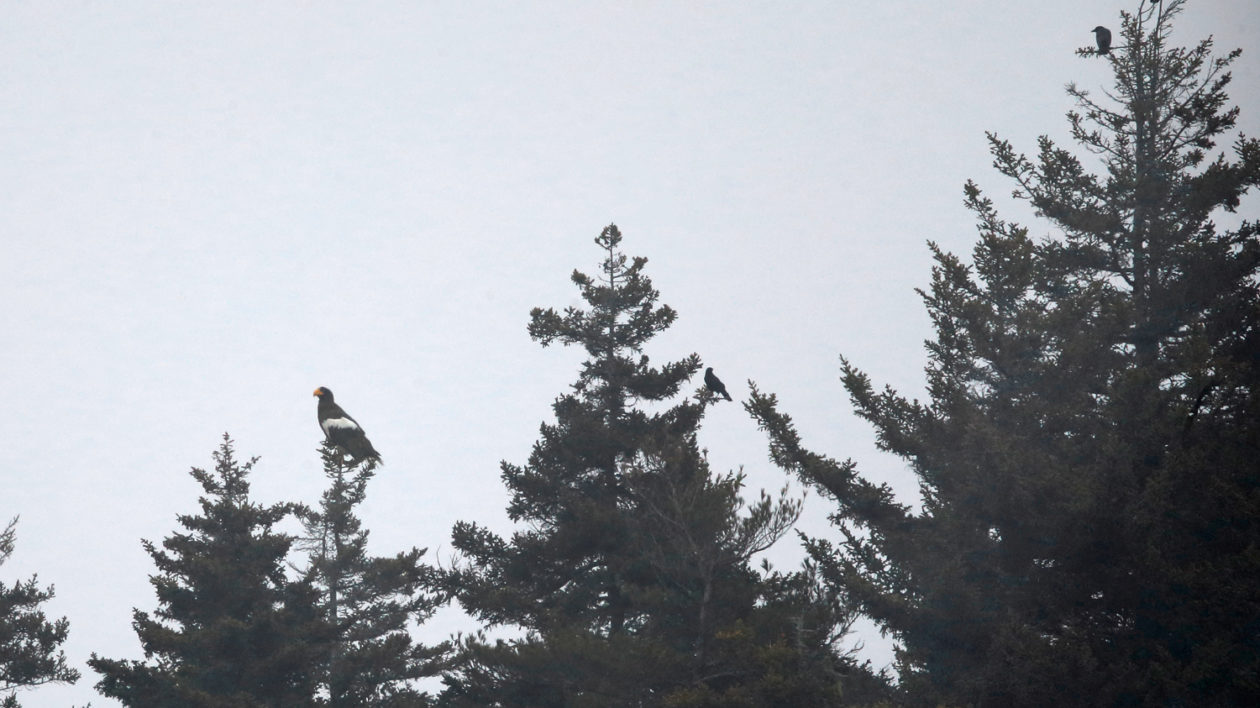
Why Is It So Far From Home?
This wayward Steller’s sea eagle is a rather extreme example of a vagrant, or a bird that is found far outside of its normal range. Vagrancy itself isn’t all that unusual, it just typically happens on a much smaller geographic scale. A northern cardinal might end up in Idaho, or a Eurasian species might end up in Alaska after a winter storm.
The fact that this bird has survived for so long outside of its normal range suggests it could persist in North America for quite some time. Birders have observed it hunting and feeding regularly, it appears to be healthy, and the New England coastline provides ample habitat.
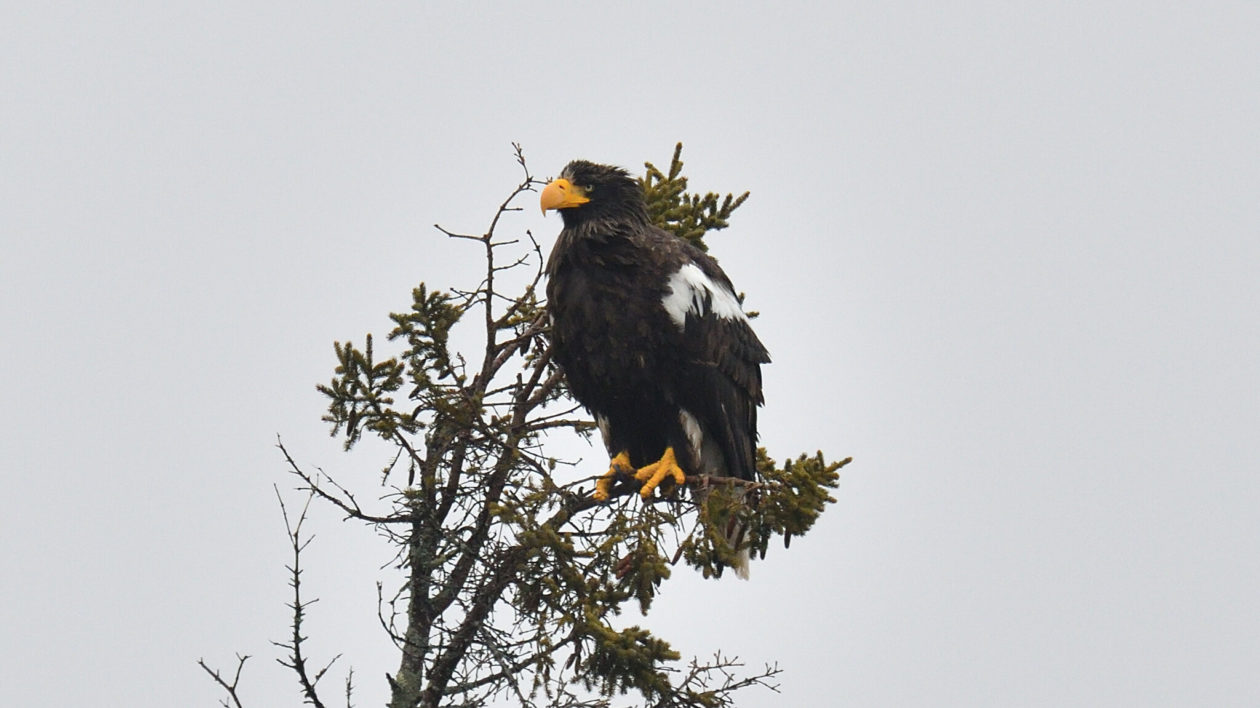
Where Can I See The Sea Eagle?
As of this writing, the last confirmed sighting occurred on 11 January in southern Maine.
If you live nearby and are serious about searching for this bird, Maine Audubon is collating sightings on this rare bird alert post. I’d also recommend setting up Google alerts for the species, as well as subscribing to the Maine rare bird alert listservs. Local Facebook groups can also be good resources for rarities, depending on how many local birders participate.
If the eagle moves on, it could turn up anywhere along the northeastern coast, including Canada. Many expert birders have recommended searching in locations where bald eagles have recently been sighted, as the two species prefer similar food sources (fish) and habitat (tidal rivers with tree-lined shores).
Audubon’s Nick Lund notes that “likely areas could include Boston Harbor, Buzzards Bay, and back on the Taunton River.” Further afield, he writes that the Chesapeake Bay, Delaware Bay, or Hudson River are all possibilities.
Wherever the eagle goes, one thing is for sure: birding in coastal New England just got a lot more interesting.
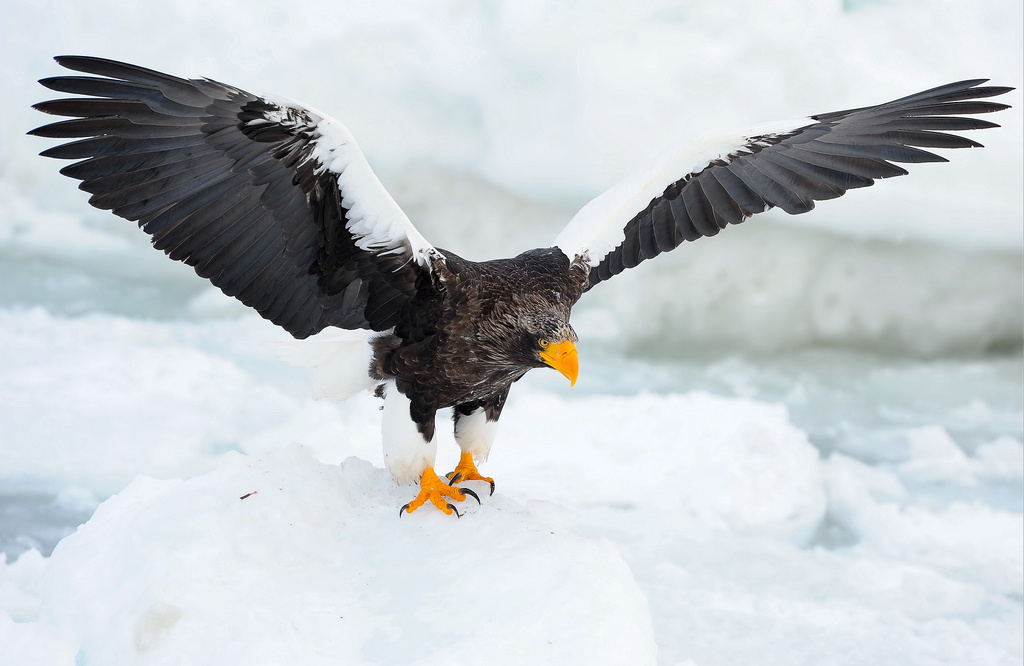



I think this flew over my yard on Monday March 17 2025 around 10:30am North Hampton, NH Chapel Rc/Willow
I was able to catch sight of this Steller’s Sea Eagle in BoothBay Maine. It was cool to follow it around with about 30 or more people the day I went. I did get photos of the bird as well. Please check it the pictures.
https://m.facebook.com/story.php?story_fbid=476918314103836&id=111404363988568
WOW that is grand! How wonderful. Would love to hear the rest ….continuing story.
Godspeed to this Steller’s
Sea Eagle .
It would be great if this majestic creature would mate and create lots more! The planet needs all creatures to thrive ☺️
These are such cool birds
A case of a Steller’s eagle pairing with a bald eagle on an island off the Alaskan coast has been reported, and they hatched a huge Baby Huey of a chick. This was several years back, and whether the chick survived to adulthood and whether it was fertile in turn is not known. But this bird could conceivably pair with a bald eagle, and probably will, if it doesn’t find its way home.
Eagle in the Bird kingdom is ranked the cleverness, features
Fly alone,
Fly higher than other birds
Sports prey from far distance
Moves at high speed
Target once and catch the prey.
Like lion in the jungle kingdom have same features in hand.
Not dwell much running the all jungle , they live to sport and Target
The USA use eagle as their symbol.
Loved this article! Keep up the fantastic reporting, PLEASE
What’s the possibility of an attempt to establish the specie here in the United States?